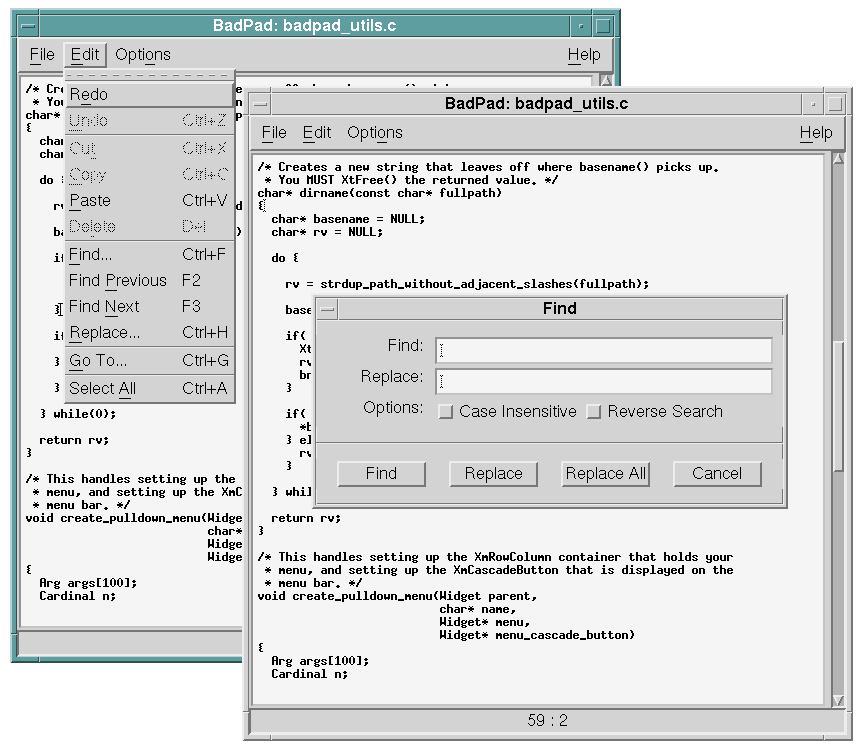

BadPad is specifically designed to be like Microsoft's Notepad. The reason for it's existence is that as more and more people "voluntarily" leave Microsoft for Linux, BSD, and other Unixes, they find themselves stranded without a text editor.
I am not one of the unfortunate ones, but I understand their plight. Personally, I recommend just biting the bullet and learning GNU Emacs or one of the other powerful Unix editors.
Still, even someone dedicated to learning one of these editors may find that they are not productive for many weeks. Also, some of these people are engineers of the non-computer kind. They have no desire, nor should they, to waste a month learning a Unix text editor. They basically want to be able to quickly modify their files and get on with business.
For these people and anyone who prefer simple interfaces, I recommend at least trying BadPad. If you are already familiar with Microsoft's Notepad, there should be almost no learning curve.
I have added a few features.
I only had a little over two weeks, and I wrote BadPad from scratch (with the exception of the Motif widgets of course). So, there are some things that are non-optimal, but you are not likely to notice these things unless you are editing files over about three megabytes in size.
As explained in Customizing BadPad, customization of font size, colors, and localization strings is not yet point and click, but changing these things is usually a simple matter of editing a text file.
It runs natively on FreeBSD, IRIX, Linux, NetBSD, OpenBSD, and Solaris. I suspect there would be few if any issues under any OS that supports Motif and gcc.
If you download the dynamically linked binary, the only thing you need that you might not have is some flavor of Motif 2.x. (Specifically, I compiled against Motif 2.1 on all the systems below.)
The statically linked file should just run.
Simply download the binary below that matches your Unix or Unix-like operating system. Move the downloaded binary to anywhere you like on your computer. Placing the binary in /usr/local/bin would be a reasonable thing to do if you have administrator privileges. If you downloaded the statically linked linux executable, you will probably want to rename the file from "badpad.static" to "badpad". Make sure you set the binary to be executable using something like "chmod 755 badpad".
BadPad is free. You can use it without restriction except that you cannot alter the binary executable and that you can only use it at your own risk.
All substantive changes are tracked in the ChangeLog file.